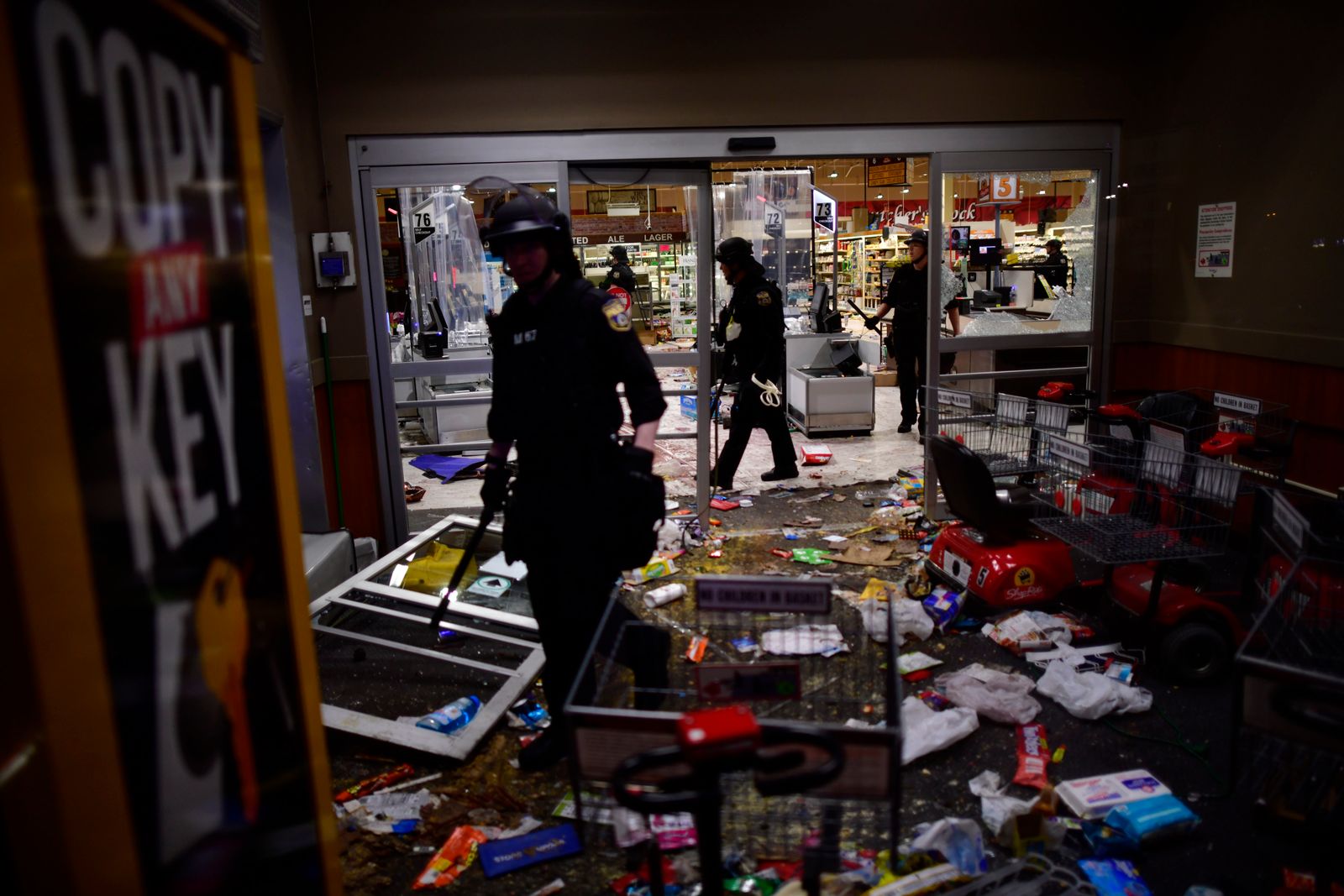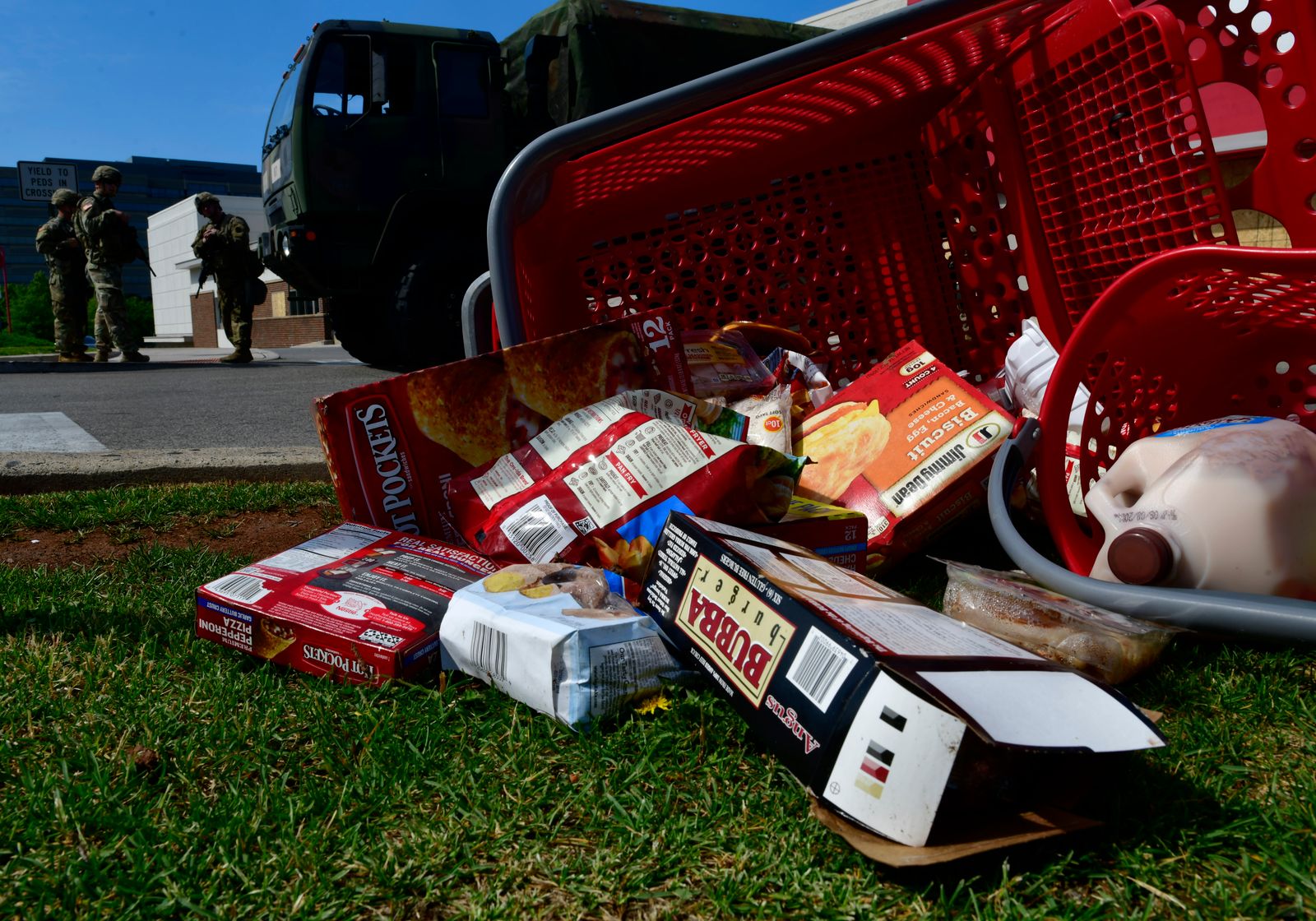Once focused mainly on loss prevention, asset protection has taken on a broader range of potential threats and issues for grocers, with that shift accelerating during the pandemic, according to the Food Industry Association.
In some cases, grocers’ asset protection teams are working more closely with operations teams to reduce shrink beyond theft, said Doug Baker, vice president of industry relations at FMI. Disasters, such as fires and floods, civil unrest and cyberattacks, are blending into the realm of asset protection.
“One of the things I’m starting to see is not only this move from loss prevention to asset protection but this idea that risk management is the umbrella under which all of these security-type positions fall,” Baker said.
This shift to concentrate on the holistic protection of people, profits, property and brand has sped up as heightened stress brought on by the pandemic has increased the risk for violence. In addition, felony theft thresholds increased in dozens of states prior to the pandemic.
A new Asset Protection in Food Retail report from FMI, along with interviews with vice presidents of the trade group, shed more light on how the role of asset protection is changing within the grocery industry and some of the noteworthy areas grocers should focus on when it comes to boosting safety and reducing liabilities.
Theft in specific departments
Store items are not typically stolen because of their dollar value, but rather for their ability to be resold, FMI noted.
The report, which was prepared by David Orgel Consulting LLC, was based on an FMI asset protection survey in January taken by 24 companies, which represent more than 5,400 stores, and executive interviews.
ORC thieves are the main culprits lifting goods in departments of major concern. Grocery stores are especially targeted for this kind of theft because they are open to the public, accessible and a central point in communities, Baker said.
Preventing theft of general merchandise as well as health and beauty care products is a top concern area for 79% of surveyed respondents, according to the FMI report. Seventy percent said keeping meat secure is a top concern, while 68% indicated that protecting center store merchandise from theft is a key source of worry.
Departments of lesser focus are prepared foods/deli, which 23% of respondents cited as a major concern, produce (22%) and frozen foods (14%).
Certain areas of the store also were cited as needing to be watched because they attract crime. Surveyed respondents said they focus heavily on the outer perimeter and parking lot as well as checkout areas. Behind the scenes, grocery stores’ receiving and front end, generator and electrical rooms as well as the cash office must be monitored closely.
Growing collaboration
Many grocers have enlisted the help of third-party companies to help combat theft if they do not have the bandwidth to build those teams internally, Baker said. This help comes in the form of anti-theft technology as well as professional investigators.
Asset protection professionals brought on by grocers can specialize in specific areas — for example, ORC investigators are hired to detect specific theft patterns, build case files and work with local law enforcement and prosecution — but overall, these professionals oversee “customer-facing and non-customer-facing” sections of the store.
The most commonly used theft deterrents include video monitors, which 100% of retailers said they use, security/guards (90%) and locked cases (79%), according to the report. FMI noted, however, that retailers must “weigh the need for security against the importance of having a pleasing in-store customer experience.”
Typically, these security systems come from partnerships grocers establish with third-party companies. For example, Indyme, a software company that specializes in anti-theft technology, has partnered with a number of grocers to install anti-theft display cases, speakers and camera systems meant to deter and catch shoplifters.
Alto, a company that focuses on reducing retail theft, also helps retailers with establishing ORC teams, which see through prosecution of ORC suspects — an area 60% of retailers said deserves further attention in 2023, according to FMI’s report.
“Stealing food is not going to rank very high on the list from a police officer if they’re dealing with something that is a matter of life and death,” Baker said. “So, the importance to be able to hand law enforcement, hand lawyers and prosecutors a case that’s got all of the information that is needed in order to be able to prosecute it, is where the industry is starting to move.”
FMI is stepping up as a third-party resource for grocers with its Asset Protection Council. The council is made up of senior-level asset protection executives from food retailers and wholesalers. In addition, a Risk and Safety Council plans education and networking events for food retail risk and safety professionals as well as provides guidance on risk management and safety issues. The two councils, which meet virally and share ideas, have been working to standardize nomenclature around asset protection, Baker said.
FMI’s annual Asset Protection and Grocery Resilience Conference helps connect retailers with solution providers, Baker said. For this year’s conference, FMI made a concerted effort for the first time to invite CPG companies, which can provide a global perspective that grocers often don’t have, Baker said, noting FMI plans to invite emergency managers to next year’s conference.
Computer vision leading tech innovation
Weapons detection software and facial matching technology are on FMI’s radar as new technologies to boost asset protection, Baker said. While facial recognition has raised concerns from the general public around privacy and other issues, he said that facial matching is more tailored so that the technology is only checking if shoppers’ faces match with those in a database of “known bad actors.”
Checkout is one area ripe for tech innovation as grocers look to balance offering convenient customer experiences and reducing vulnerability to theft, FMI noted.
“You’ll probably continue to see the use of artificial intelligence and computer vision as a way of checking out as the technology continues to improve and is able to scale,” Baker said, noting they likely will be supplemental to registers and self-checkout stations.
Wheel-locking mechanisms on shopping carts — which can be low- or high-tech depending on the solution — can deter ORC. “It seems very basic, but it’s so important because if you can stop [thieves] before they get too far away from the door, you have a better chance of getting that product back,” Baker said.
Validating new options to determine how effective they are is one of the key areas food retailers flagged as they want FMI and the industry to help with, per FMI’s report.
To help address that, FMI is in the “pilot” phase of launching a technology directory that will allow its members to sort and filter for providers in different categories, like asset protection and security, to potentially partner with, Baker said.
The directory will cover technology in “any functional area of the industry” that might be needed including supply chain, manufacturing, private brands, asset protection, customer engagement, loyalty, front-end systems and back-end systems, Baker said.
Keep an eye on internal theft
As data and analytics play a larger role in grocers’ asset protection strategies, FMI’s report highlighted a little-mentioned area of loss prevention: internal theft.
A majority of surveyed food retailers (98%) cited internal theft as a top metric they measure, followed by shrink, workers’ compensation claims, theft and spoiled food loss.
Internal theft can not only refer to store employees but also to business partners, such as a third-party delivery courier, who have access to a grocer’s backroom. Workers can either steal themselves or get help from a friend, family member or significant other, Baker said.
Baker said the high percentage for internal theft measuring isn’t surprising. “Retailers want to control what they can control because there’s plenty that they can’t control and so managing inside their four walls, starting with their own staff and their trading partners remains really high on that chart.”
Keeping an eye on backrooms and making sure that only authorized personnel are there can help grocers reduce internal theft, Baker said.
Future opportunities
As asset protection has broadened beyond theft, grocers have a more varied list of areas they want to address and bolster, per FMI’s survey.
In addition to 60% of grocers saying they want to expand prosecution/adjudication efforts, respondents also cited loss/theft at self-checkout and mobile scan-and-go (30%); ORC (28%); business continuity planning (22%); and active assailant preparedness (17%) as areas of further opportunity in their 2023 planning.
FMI noted that violence de-escalation — an element present in ORC as well as active assailants — is also a key area for focus for grocers.
Federal law is where grocers are hoping ORC efforts will continue to expand as newly proposed legislation has been introduced to the U.S. House of Representatives and U.S. Senate that would address grocers’ concerns for lack of prosecution.
“This is a tremendous issue that has been going on and it seems to have ramped up a lot,” said Christine Pollack, vice president of government relations at FMI, regarding ORC crimes and violence. “And so there’s a heightened awareness on Capitol Hill for legislation to tackle this problem. This is a good bill, we support it.”
This article was written by Peyton Bigora and Catherine Douglas Moran from Grocery Dive and was legally licensed through the DiveMarketplace by Industry Dive. Please direct all licensing questions to [email protected].
![]()



